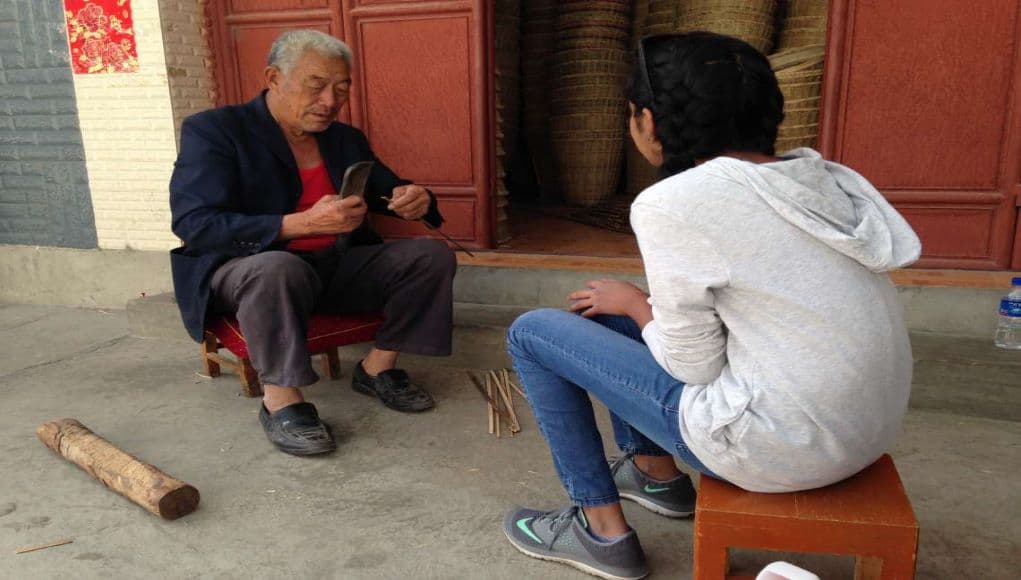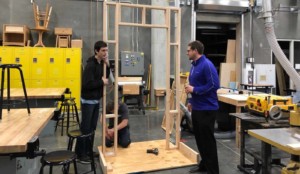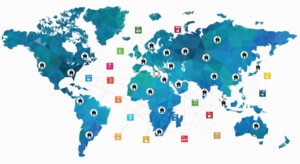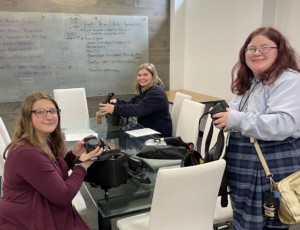Is the “Place” in Place-Based Learning Enough?

We all know experiential learning can be powerful. We learn by doing, immersing ourselves in long-term projects, tasks, adventures and more. Place-based Learning is a framework that effectively delivers experiential learning and supports teachers in amplifying learning from place and context. Place-Based Learning “places students in local heritage, cultures, landscapes, opportunities and experiences, using these as a foundation for the study of language arts, mathematics, social studies, science and other subjects across the curriculum” (Center for Place-Based Learning and Community Engagement). While this may seem broad, it allows for different levels of implementation while still ensuring quality. There are many ways to implement place-based learning as shown in the graphic below:
One of the most common ways schools and teachers engage in Place-Based Learning is through trips (which is one of the levels of implementation). I was lucky enough to have a week like this at my school in Washington State when I went to Middle and High School. It was called “Focus Week,” and I was allowed to engage in a variety of experiences from traveling to the Ashland Shakespeare festival to spending a week at sea on a Schooner. Some of these trips required extensive travel while others were more local. All trips though involved connecting with people and places in our community. Now that I am at an international school, I learned that this experience is more common in said schools. International Schools, specifically, leverage the unique opportunity that it has to connect students with the countries they reside in or other countries. Many international schools have an experiential learning week that often involves travel or learning outside of the walls of the school.
Shanghai American School, where I currently serve as an Instructional Coach, has had this learning part of its history for quite some. I’ve chaperoned two trips, one where students traveled to Yangshuo to participant in collaborative learning activities in a beautiful environment. Students engaged in activities such as cooking authentic Chinese food to rock climbing and hiking through Mud Caves. In another trip, students traveled to Xian to see the famous Terracotta Warriors and visited famous historical cultural sites. I really enjoyed the trips and learned a lot, but I had a similar gut-check when I participated in these trips during some of the activities – the same gut-check I have when I examine some projects. “Is fun and enjoyment enough?” I was also wondering about the payoff of the experience. It’s such a privilege to engage in place-based learning experiences that It requires us to ensure it is meaningful and an experience unique enough to warrant all the expense and resources.
Craig Tafel is our director of Ménwài (门外) – translated as “outside the gates” – at Shanghai American School, and his job is to coordinate all the facets of learning outside the walls. He has been both a teacher at the school as well as the coordinator of a specific experiential learning offering called, Microcampus (see video below). It involves small groups of students who spend four weeks during the school year living and learning in a small village in the foothills of the Tibetan Plateau. Students take on roles as ambassadors and the need for them to be aware of the group’s impact on people and places. This is an example of both “Service Learning” and “Local Experiences and Expertise.” They partner with villagers to learn from them, tell their stories and create videos to celebrate their learning. It really is an exemplary place-based learning experience.
Diving Deeper into Place
Tafel has recently been tasked with reviewing and revising the Ménwài (门外) program at Shanghai American School. According to Tafel, “There were (and are) some shining examples of student offerings where teachers and travel partners worked together to create some very special, significant offerings—but for nearly two decades we really did not have a shared sense of purpose. We had dozens of ‘trips”—again, many of them very, very good—but there was not a shared way of identifying, assessing, revising, or building the experiences.” He told me that many people, while they value trips and place-based learning, there are a lot of misconceptions around this purpose of the goal. He shared, “The concept of student “bonding” as a goal in place-based learning seems to come up quite a bit, but I try to push back against that. Of course, our students will form close connections with one another as a result of this work—that is what students do, after all, and they will do that naturally and without the time, expense, and risk associated with taking students out into the world beyond the school grounds to learn.”
Tafel and his team have worked towards the revision and created a framework to ensure high-quality place-based learning at Shanghai American School. The goal was to create a simple set of “pillars” that would serve as a filter to inform the design process and support student learning. They are as follows:
- Expanding intercultural understanding by connecting with members of local communities and their surroundings;
- Working through challenges while engaging in authentic activities that require students to depend on themselves, their peers, and outside experts;
- Personal growth resulting from leaving comfort zones, challenging assumptions, expanding boundaries, taking reasonable risks, and making thoughtful choices; and
- Awareness of impact on the places we visit and the people who live there through shared experience, responsible action, and sensitivity to the environment.
The framework ensures intentional purpose and meaningful learning. Here are some of the big takeaways that I have learned from Craig Tafel and my examination of effective place-based learning.
Clear Outcomes and Curriculum Focus
The framework above helps to ensure there are clear learning outcomes for place-based learning. However, there are also clear curriculum goals aligned to the experiences. These experiences align to long-term transfer goals we have as a school such as “Ethical Global Citizens, “Skillful Communicators,” and “Critical Thinkers.” These learning goals are utilized in the curriculum both inside and outcome the classroom. Also, many of the new trips have a focus on the “micro” curriculum and standards in specific disciplines such as visual arts, social studies, and physical education. This ensures that place-based learning is “Curriculum with Context.” These learning outcomes are assessed throughout the place-based learning experiences in many forms from formal products to shorter tasks and checks for understanding.
A Framework, Not an Event
Place-based learning is not an event. It shouldn’t just be a week where we take students outside the walls of our classroom. It has specific components that serve as its quality indicators such as “Local Experiences and Expertise,” “Service Learning” and “Inquiries and Investigations,” and more; all of which are explained in Getting Smart’s publication, What is Place-Based Education and Why Does It Matter?. It is a mindset and framework we should use to approach any time we want students to learn outside the walls of their classroom. Whether it simply involved communicating and partnering with local experts outside the classroom during a school day or embarking on a journey to a foreign language, schools should have a set of principles and purposes to ensure that all place-based learning aligns to the school mission and goals.
Leveraging Project-Based Learning
In the revision of Ménwài (门外), many of the current trips are building upon the elements of Project-Based Learning. Many of the experiences have students creating authentic products to capture the learning. Students collaborate to give and receive feedback from peers and people in the community. The experiences are a focus on learning and inquiry where students ask questions before, during, and after a journey to a place. Place-based learning and project-based learning can support and enhance one another, and place-based learning can create an authentic context to explore topics.
Small is Great
One common misconception is that place-based learning has to be a “big deal”. In fact, it can be a simple extension of learning in the community that only takes a few hours. Tafel shared one example with me: “An example from my days as a science teacher: we were learning about plant parts and functions. During a regular class period, I walked with students over to a local market, with a fairly simple assignment: find, sketch, and name two examples of edible leaves, flowers, stems, and roots—with English and Chinese names, since we were in Shanghai. In this process, students not only reinforced concepts from our in-class learning, but they also practiced their inquiry skills in a real-world context.” These smaller experiences are just as meaningful and can provide stepping stones and foundations to more extensive experiences, and are an example of “Community as the Classroom,” where the community itself becomes the school.
It is critical that place-based learning is done in a thoughtful and intentional way. It should be a comprehensive framework and process, not simply an event. Just like all learning experiences, it should be purposeful and grounded in a shared understanding and vision.
For more, see:
- Place-Based-Education-Anchors-Learning-in-the-Community
- Learning Leadership Skills Outdoors: Place-Based Ed in the Puget Sound
- Where Place-Based Ed Fits into NGLC’s Fields of Learning and Learning Ecosystems
Stay in-the-know with innovations in learning by signing up for the weekly Smart Update.









0 Comments
Leave a Comment
Your email address will not be published. All fields are required.